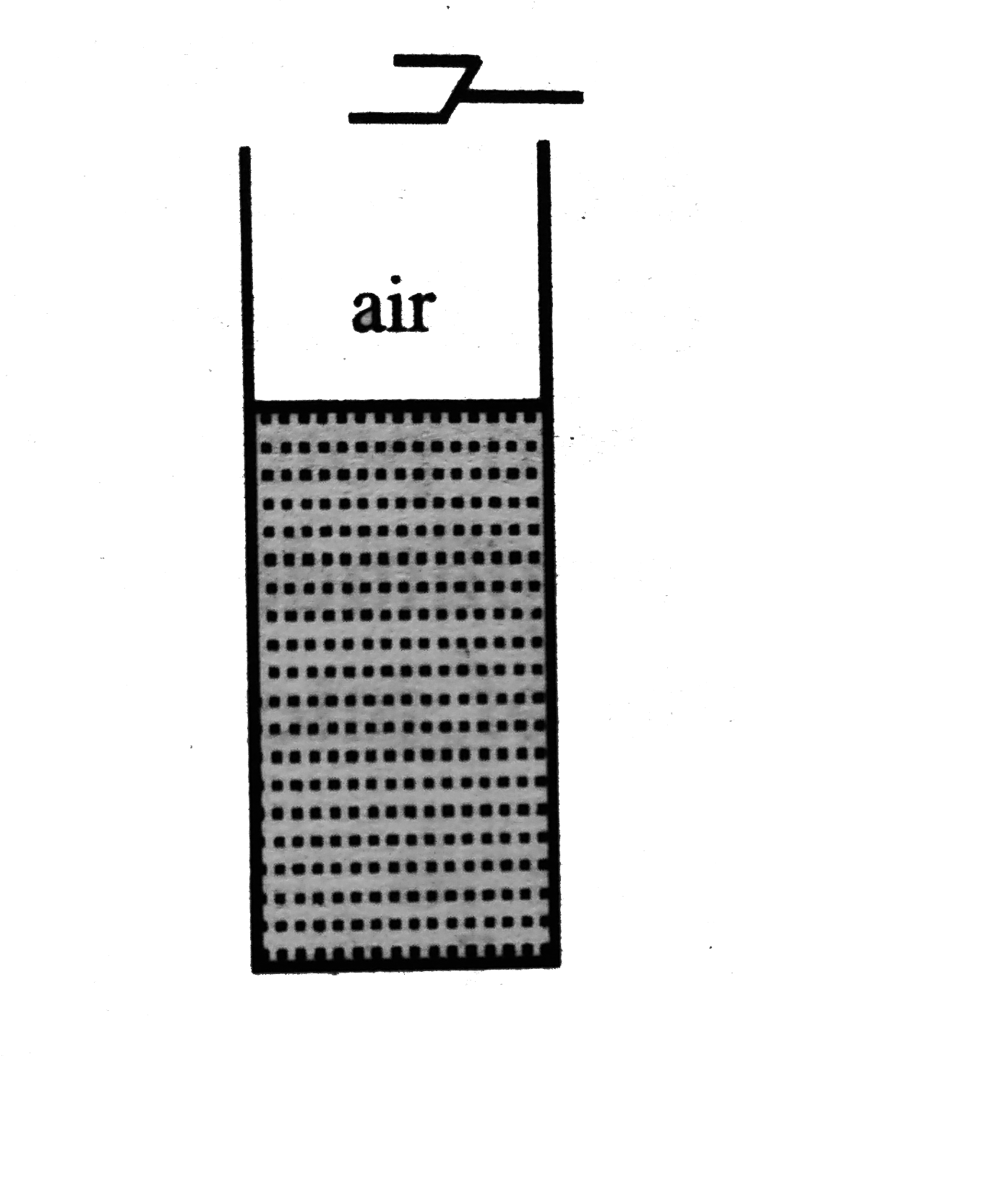A tuning fork is used to produce resonance in glass tuve. The length of the air column in the tube can be adjusted by a variable piston. At room temperature of 27∘C two succesive resonance are produced at 20 cm and 73 cm column length. If the frequency of the tuning fork is 320 Hz. the velocity of sound is air at 27∘C is
The correct Answer is:B
To solve the problem, we need to find the velocity of sound in air at a temperature of 27°C using the information about the resonant lengths of the air column in the tube.
1. Identify the Lengths of Resonance:
- The first resonance occurs at L1=20cm.
- The second resonance occurs at L2=73cm.
2. Understand the Resonance in a Closed Tube:
- In a closed tube, the resonating lengths correspond to odd multiples of λ4 (where λ is the wavelength).
- The first resonance (20 cm) corresponds to λ4.
- The second resonance (73 cm) corresponds to 3λ4.
3. Set Up the Equation:
- The difference between the two lengths gives us:
L2−L1=3λ4−λ4=2λ4=λ2
- Substitute the lengths:
73cm−20cm=λ2
- This simplifies to:
53cm=λ2
4. Calculate the Wavelength:
- To find λ:
λ=2×53cm=106cm=1.06m
5. Use the Frequency to Find Velocity:
- The formula for the velocity of sound is given by:
V=f⋅λ
- Where f=320Hz and λ=1.06m:
V=320Hz×1.06m=339.2m/s
Final Answer:
The velocity of sound in air at 27∘C is approximately 339.2m/s.
- The first resonance occurs at L1=20cm.
- The second resonance occurs at L2=73cm.
- In a closed tube, the resonating lengths correspond to odd multiples of λ4 (where λ is the wavelength).
- The first resonance (20 cm) corresponds to λ4.
- The second resonance (73 cm) corresponds to 3λ4.
- The difference between the two lengths gives us:
L2−L1=3λ4−λ4=2λ4=λ2
- Substitute the lengths:
73cm−20cm=λ2
- This simplifies to:
53cm=λ2
- To find λ:
λ=2×53cm=106cm=1.06m
- The formula for the velocity of sound is given by:
V=f⋅λ
- Where f=320Hz and λ=1.06m:
V=320Hz×1.06m=339.2m/s
The velocity of sound in air at 27∘C is approximately 339.2m/s.
Topper's Solved these Questions
- SOLVD PAPERS 2017 NEET, AIIMS & JIPMERBOOK - DC PANDEY ENGLISHCHAPTER - SOLVD PAPERS 2017 NEET, AIIMS & JIPMEREXERCISE - Solved paper 2018(AIIMS)
28 Videos
- SOLVD PAPERS 2017 NEET, AIIMS & JIPMERBOOK - DC PANDEY ENGLISHCHAPTER - SOLVD PAPERS 2017 NEET, AIIMS & JIPMEREXERCISE - Solved paper 2018(JIPMER)
38 Videos
- SOLVD PAPERS 2017 NEET, AIIMS & JIPMERBOOK - DC PANDEY ENGLISHCHAPTER - SOLVD PAPERS 2017 NEET, AIIMS & JIPMEREXERCISE - Solved Papers 2017(JIPMER)
28 Videos
- SIMPLE HARMONIC MOTIONBOOK - DC PANDEY ENGLISHCHAPTER - SIMPLE HARMONIC MOTIONEXERCISE - Integer type questions
14 Videos
- SOUND WAVESBOOK - DC PANDEY ENGLISHCHAPTER - SOUND WAVESEXERCISE - Exercise 19.7
4 Videos
Similar Questions
If a resonance tube is sounded with a tuning fork of frequency 256 Hz, resonance occurs at 35 cm and 105 cm. The velocity of sound is about
View SolutionA tuning fork of frequency 100 Hz emits a wave of wavelength 4m. What is the temperature of the atmosphere, if the velocity of sound at 27∘C is 330m/s?
View Solution
Knowledge Check
In a resonance tube, using a tuning fork of frequency 325 Hz, two successive resonance lengths are observed at 25.4 m and 77.4 cm respectively. The velocity of sound is air is
A338ms−1B328ms−1C330ms−1D320ms−1
In an experiment to measure the speed of sound by a resonating air column, a tuning fork of frequency 500 Hz is used. The length of the air column is varied by changing the leavel of water in the resonance tube. Two successive resonances are heard at air columns of length 50.7 cm and 83.9 cm. Which of the following statements is (are) true?
View SolutionDistance travelled by the sound produced by a tuning fork of frequency 50 Hz completing 200 vibrations is, (the velocity of sound in air is 330 m/s)
View SolutionA tuning fork vibrating at frequency 800 Hz produces resonance in a resonance column tube. The upper end is open and the lower end is closed bythe water surface which can be varied. Successive resonances are observed at lengths 9.75 cm, 31.25 cm and 52.75 cm. Calculate the speed of sound in air from these data.
View SolutionA tuning fork and an organ pipe at temperature 88∘C produce 5 beats per second. When the temperature of the air column is decreased to 51∘C the two produce 1 beat per sec. What is the frequency of the tuning fork?
View SolutionA tuning fork produces a wave of wavelength 110 cm in air at O0C. The wavelength at 25∘C would be
View SolutionA resonance occurs with a tuning fork and an air column of size 12cm. The next higher resonance occurs with an air column of 38cm. What is the frequency of the tuning fork ? Assume that the speed of sound is 312m/s.

View SolutionA standing tuning fork of frequency f is used to find the velocity of sound in air by resonance column appartus. The difference two resonating lengths is 1.0m. Then the velocity of sound in air is
View Solution
